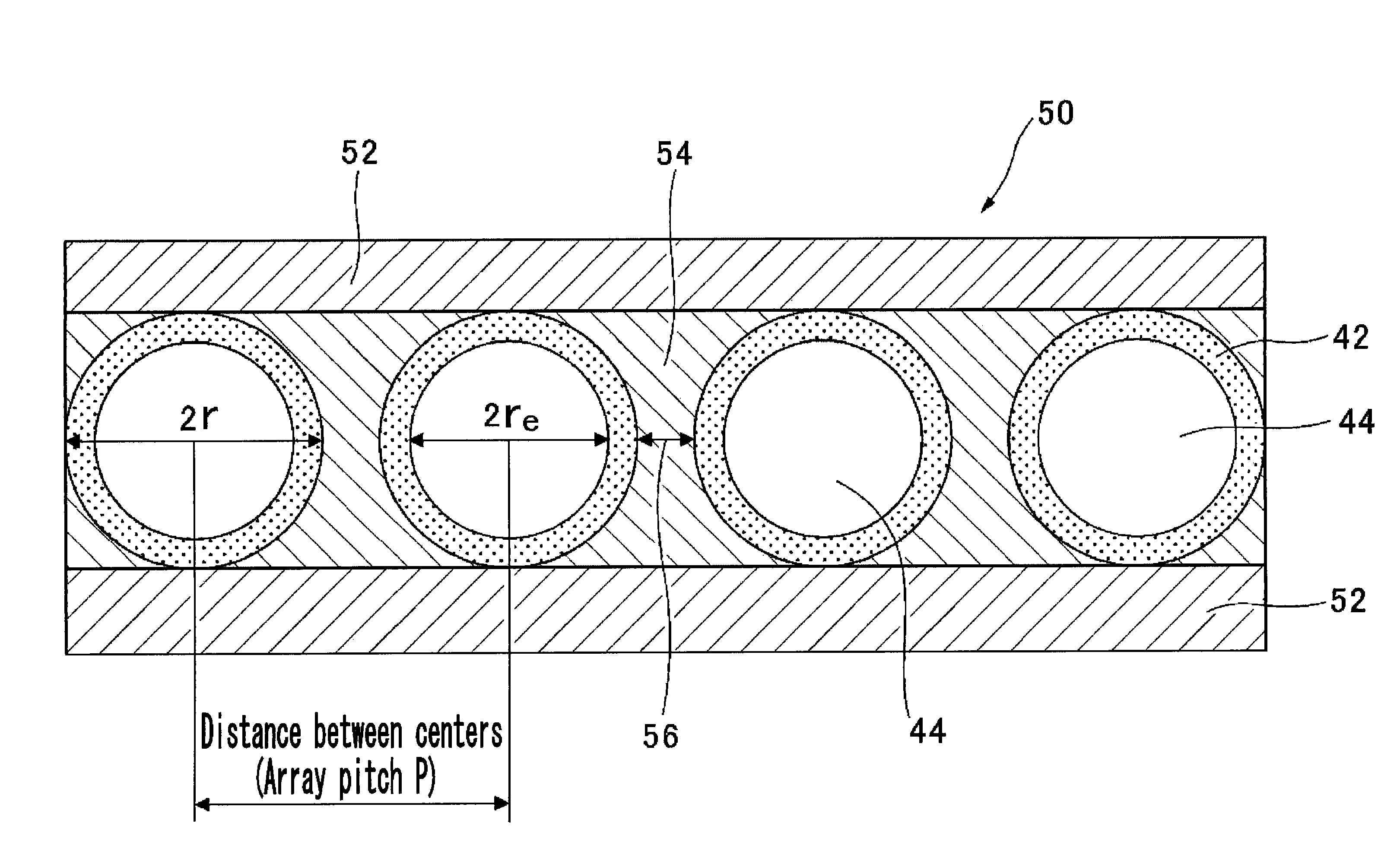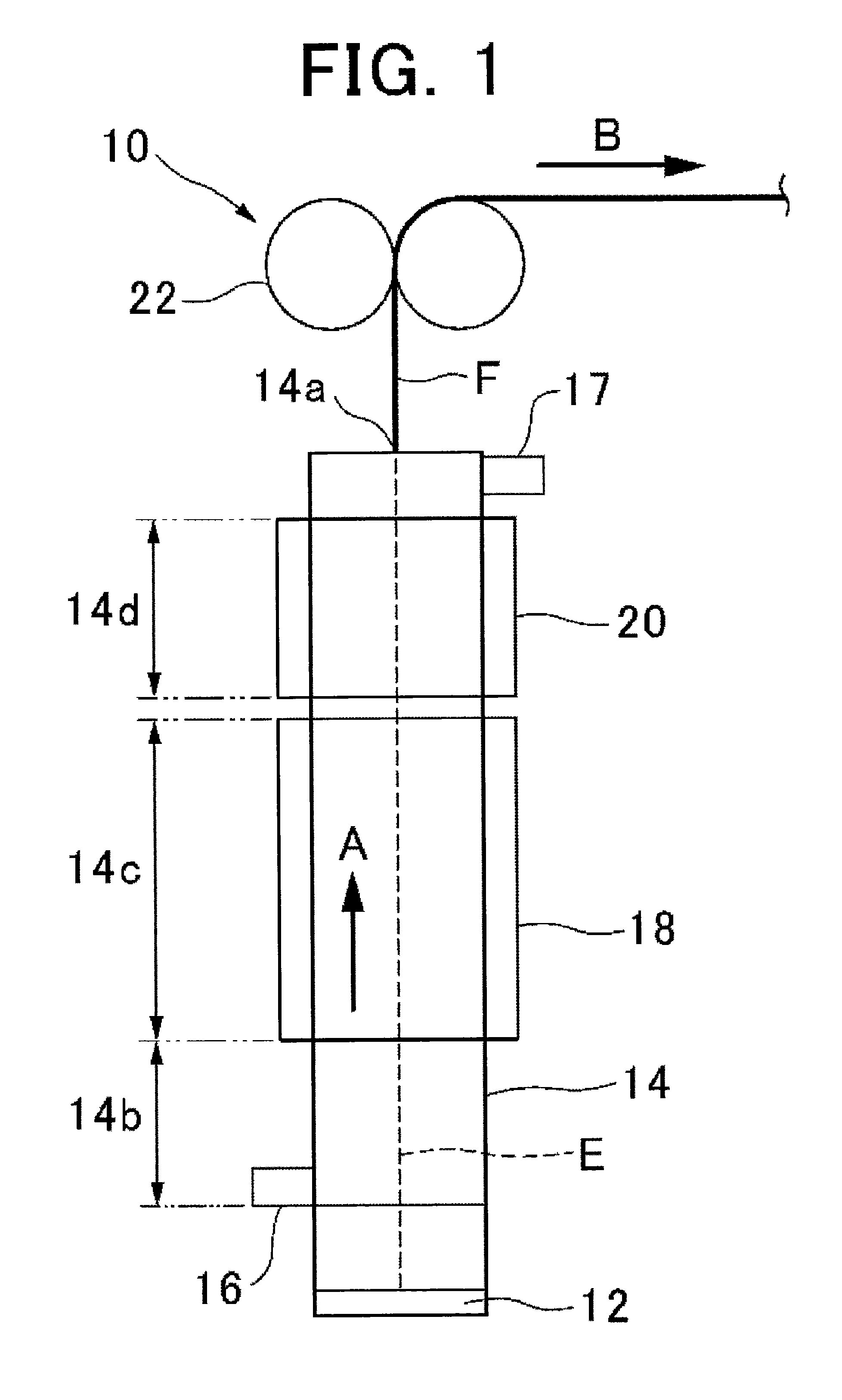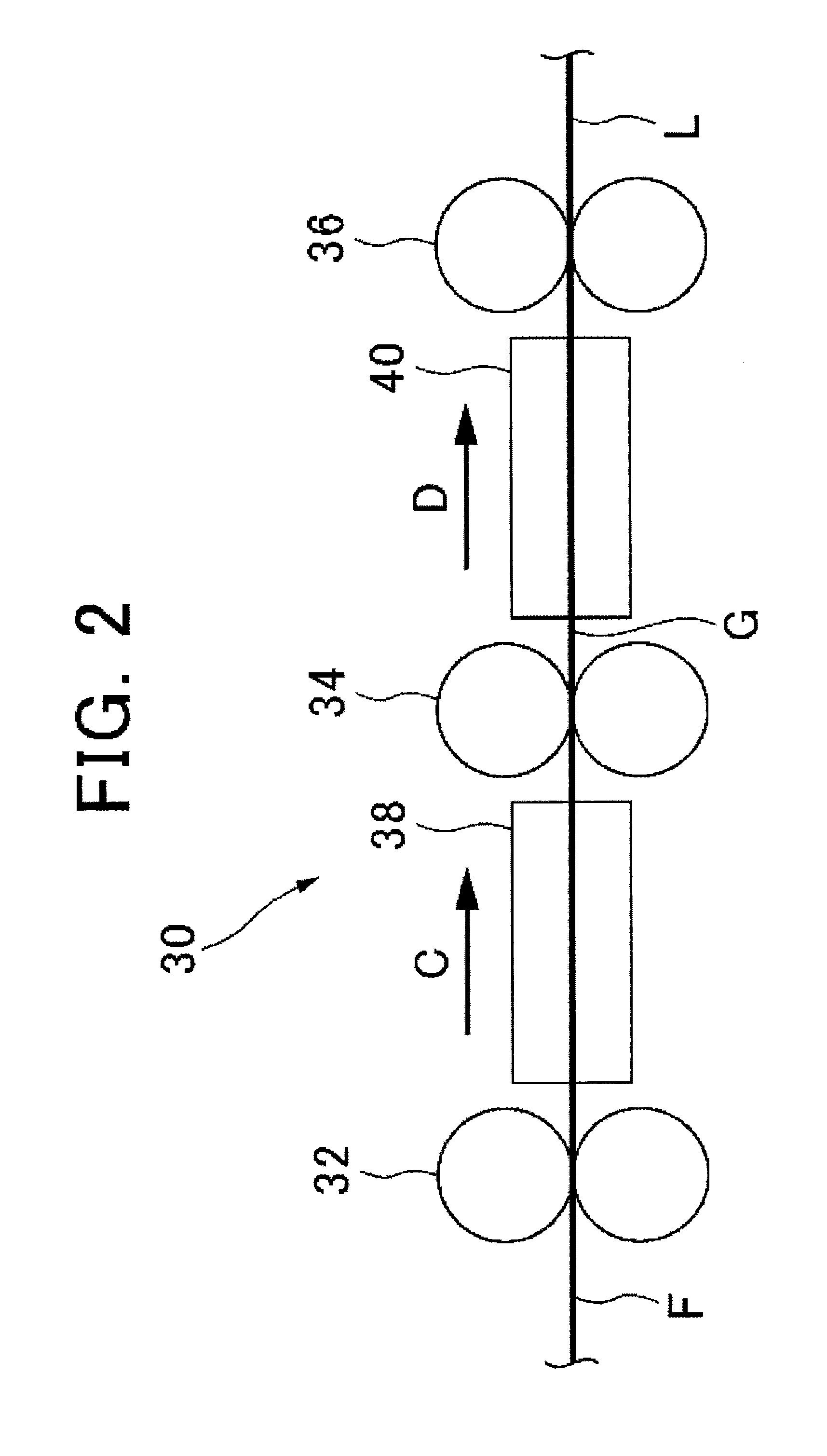Rod lens array and image sensor head that uses same
a technology of image sensor and lens array, which is applied in the field of rod lens array and image sensor, can solve the problems of difficult to achieve miniaturization of the optical system, inability to focus the image, etc., and achieve the effects of small light intensity irregularity, short conjugation, and large transmitted light amoun
- Summary
- Abstract
- Description
- Claims
- Application Information
AI Technical Summary
Benefits of technology
Problems solved by technology
Method used
Image
Examples
example 1
[0180]A first layer formation stock solution (uncured form material) was made by heating and kneading 43.5 parts by mass of polymethyl methacrylate (PMMA), 15.5 parts by mass of methyl methacrylate (MMA), 7.5 parts by mass of phenyl methacrylate (PhMA), 3.5 parts by mass of t-butyl methacrylate (TBMA), 30 parts by mass of tricyclo[5.2.1.02,6]decanyl methacrylate (TCDMA), 0.25 parts by mass of 1-hydroxycyclohexyl phenyl ketone (HCPK), and 0.1 parts by mass of hydroquinone (HQ) at 70° C.
[0181]A second layer formation stock solution (uncured form material) was made by heating and kneading 44 parts by mass of PMMA, 17 parts by mass of MMA, 8 parts by mass of PhMA, 5.5 parts by mass of TBMA, 25.5 parts by mass of TCDMA, 0.25 parts by mass of HCPK, and 0.1 parts by mass of HQ at 70° C.
[0182]A third layer formation stock solution (uncured form material) was made by heating and kneading 46 parts by mass of PMMA, 16.5 parts by mass of MMA, 11 parts by mass of PhMA, 8.5 parts by mass of TBMA,...
example 2
[0203]A rod lens was prepared in the same way as Example 1 except for, after the filament after cure processing was drawn 2.34 times at 145° C., conducting relaxation processing so that the relaxation rate at 127° C. became 0.71.
[0204]The radius r of the rod lens obtained in this way was 0.232 mm, the center refractive index n0 was 1.503 at the wavelength of 525 nm, and approximating the refractive index distribution in the range from 0.2r to 0.9r from the center to the outer periphery by a formula relating to the aforementioned refractive index distribution, the refractive index distribution constant g was 0.43 mm−1 at the wavelength of 525 nm. In addition, a layer in which dye is mixed was formed from the outer periphery towards the center, the effective radius re being 0.220 mm, and the numerical aperture NA of the lens being 0.142.
[0205]Using 684 of the obtained rod lenses, a 1-line rod lens array was prepared in which the lens length was 8.8 mm and array pitch P was 0.468 mm (g...
example 3
[0209]A rod lens was prepared in the same way as Example 1 except for, after the filament after cure processing was drawn 4.11 times at 145° C., conducting relaxation processing so that the relaxation rate at 127° C. became 0.71.
[0210]The radius r of the rod lens obtained in this way was 0.175 mm, the center refractive index n0 was 1.503 at the wavelength of 525 nm, and approximating the refractive index distribution in the range from 0.2r to 0.9r from the center to the outer periphery by a formula relating to the aforementioned refractive index distribution, the refractive index distribution constant g was 0.57 mm−1 at the wavelength of 525 nm. In addition, a layer in which dye is mixed was formed from the outer periphery towards the center, the effective radius re being 0.166 mm, and the numerical aperture NA of the lens being 0.142.
[0211]Using 914 of the obtained rod lenses, a 1-line rod lens array was prepared in which the lens length was 6.7 mm and array pitch P was 0.350 mm (g...
PUM
 Login to View More
Login to View More Abstract
Description
Claims
Application Information
 Login to View More
Login to View More - R&D
- Intellectual Property
- Life Sciences
- Materials
- Tech Scout
- Unparalleled Data Quality
- Higher Quality Content
- 60% Fewer Hallucinations
Browse by: Latest US Patents, China's latest patents, Technical Efficacy Thesaurus, Application Domain, Technology Topic, Popular Technical Reports.
© 2025 PatSnap. All rights reserved.Legal|Privacy policy|Modern Slavery Act Transparency Statement|Sitemap|About US| Contact US: help@patsnap.com



